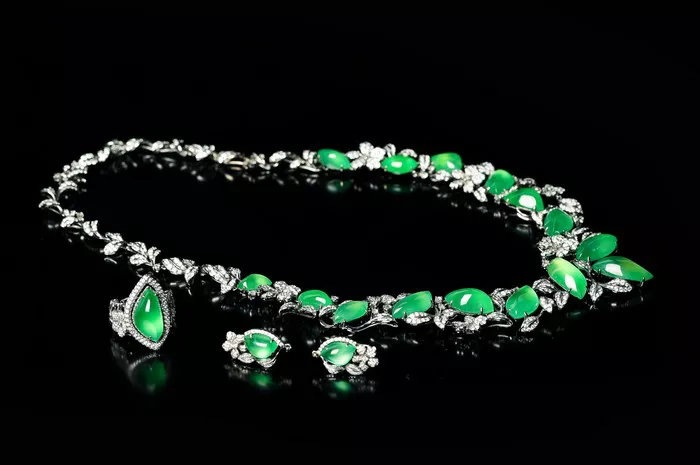Emeralds, with their mesmerizing green hues, stand out as one of the most sought-after gemstones in the world. Their rarity, coupled with a rich history dating back over 4,000 years, contributes to their allure and desirability among collectors and jewelry enthusiasts alike. In this article, we delve into the exceptional rarity of emeralds, exploring the factors that influence their value and comparing them to diamonds, highlighting why these gemstones are truly a class apart.
Emerald Rarity:
Emeralds belong to the beryl family of minerals, distinguished by their rich green coloration, a result of trace amounts of chromium or vanadium within the crystal structure. While beryl itself is a relatively common mineral, the formation of emeralds with the desirable color and clarity suitable for gemstone use is a rare occurrence.
Emeralds typically form in hydrothermal veins, where hot fluids carry dissolved minerals through cracks and fissures in the Earth’s crust. The conditions necessary for the formation of emeralds are precise and relatively uncommon, requiring specific geological environments rich in beryllium, chromium, and vanadium, along with the right temperatures and pressures for crystal growth.
Furthermore, the journey from formation to discovery is fraught with challenges. Many emerald deposits are located in remote, rugged terrains, such as mountainous regions or dense jungles, making extraction difficult and costly. Moreover, the geological processes that create emerald deposits often result in scattered, sporadic occurrences rather than concentrated pockets of gem-quality stones, further adding to their rarity.
The scarcity of emeralds is compounded by the stringent criteria for determining their quality. Gem-quality emeralds must exhibit a rich, vivid green color with high transparency and minimal inclusions. Achieving these characteristics is exceptionally rare, as most emeralds possess some degree of imperfection, which can significantly affect their value.
Factors Influencing Emerald Value:
Clarity: Emeralds are classified as Type 3 gemstones, meaning that they almost always contain visible inclusions. These inclusions, which can include gas bubbles or tiny crystals, affect the stone’s transparency and clarity. While some inclusions are expected and even desired to prove authenticity, excessive inclusions can reduce the stone’s value significantly.
Cut: The cut of an emerald plays a crucial role in enhancing its color and overall appearance. Emeralds are often cut in a rectangular shape, known as an “emerald cut,” to maximize their color consistency. A well-cut emerald will display a vibrant green hue, while a poorly cut stone may appear dull and lackluster.
Size: Emeralds come in a variety of sizes, from small accent stones to larger center stones used in rings or necklaces. However, it’s essential to note that size alone does not determine value. Larger emeralds may have visible inclusions that impact their clarity, diminishing their worth despite their size.
Color: The color of an emerald is perhaps its most crucial quality factor. High-quality emeralds exhibit a vivid green hue, with excellent color saturation, tone, and hue. The most valuable emeralds display a deep, rich green color that is highly sought after by collectors and connoisseurs.
Comparing Emeralds to Diamonds:
Conventionally, diamonds have reigned supreme in the realm of gemstones, symbolizing everlasting love and unparalleled brilliance. However, a closer examination reveals a nuanced perspective. While diamonds undeniably possess unparalleled hardness and sparkle, emeralds offer a distinct allure that transcends traditional notions of beauty.
Emeralds, when cut to true gem quality, exhibit an unparalleled depth of color and clarity. Unlike diamonds, which are primarily valued for their brilliance, emeralds derive their allure from their mesmerizing green hue. This unique characteristic, combined with their scarcity, elevates emeralds to a status that rivals even the most exquisite diamonds.
Emeralds, unlike diamonds, are not abundant in nature. The process of their formation is a testament to the intricate dance of geological forces over millions of years. These gemstones emerge from the depths of the earth, often within veins of rock where conditions are exceptionally rare and specific. The combination of beryllium, chromium, and vanadium, along with precise geological conditions, gives rise to the vibrant green hue that distinguishes emeralds.
In conclusion, emeralds are truly a gemstone beyond compare. Their exceptional rarity, coupled with their rich history and unparalleled beauty, makes them a prized possession for collectors and jewelry enthusiasts worldwide. Whether adorning a royal crown or a modern-day engagement ring, emeralds continue to captivate and enchant with their timeless elegance.


